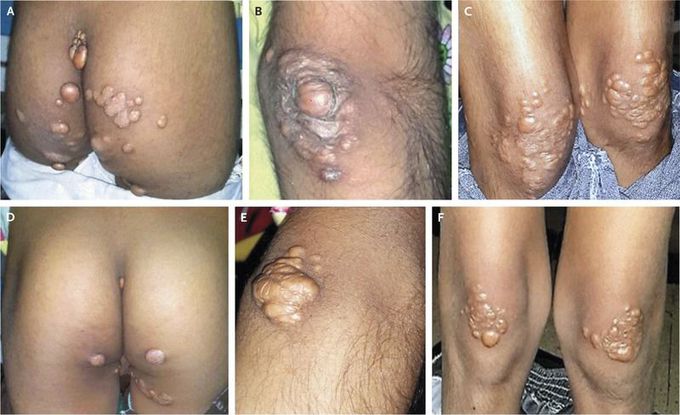


Xanthomas in Familial Hypercholesterolemia
A 13-year-old boy presented to a primary care clinic with skin lesions on his buttocks, elbow, and knees (Panels A, B, and C). The lesions were initially noted when he was 5 years of age, but no medical care was sought until similar lesions were apparent in his younger brother several years later (Panels D, E, and F). The boys’ mother and father were first cousins. The patient had a serum low-density lipoprotein (LDL) cholesterol level of more than 600 mg per deciliter (15.5 mmol per liter); the LDL cholesterol level in his younger brother was 440 mg per deciliter (11.4 mmol per liter). The boys’ father had a history of myocardial infarction at 35 years of age, and his LDL cholesterol level was 310 mg per deciliter (8.0 mmol per liter) while he was taking atorvastatin. Their mother had an LDL cholesterol level of 294 mg per deciliter (7.6 mmol per liter). Genetic testing for familial hypercholesterolemia was advised but declined, and a clinical diagnosis of the condition was presumed. Familial hypercholesterolemia is caused by mutations in several genes, including those that encode the LDL receptor and apolipoprotein B. The characteristic lesions associated with the condition are tuberous xanthomas, which appear as firm, painless, reddish-yellow nodules primarily on extensor surfaces of joints and pressure areas of the body. The two brothers were prescribed daily treatment with atorvastatin and ezetimibe, which resulted in a small reduction in their LDL cholesterol levels.

